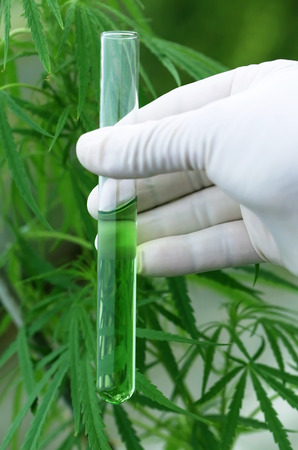
Would it surprise you to know that only .6% of all participants in medical marijuana programs are getting any ongoing medical oversight? Williams et al. assessed medical marijuana programs for Health Affairs according to seven components of traditional medical care and pharmaceutical regulation. The authors found that of the initial 23 states and the District of Columbia who had approved medical marijuana, 14 programs were nonmedical, according to those standards. These fourteen programs collectively enrolled 99.4% of all nationwide participants in medical marijuana programs.
One of the study’s coauthors, Dr. Silvia Martins said: “When you’re allowing someone to have access to a certain product as a medication, it needs to be overseen by good medical practices and medical rules.” And that is necessarily based on a clear understanding of the risks and benefits of any medicinal product.
With that in mind, the MIND project at McLean Hospital in Boston is researching medical marijuana (MMJ). MIND stands for: Marijuana Investigations for Neuroscientific Discovery. Currently MIND is conducting a longitudinal study of MMJ. The first phase of the MIND project assesses subjects at baseline, before beginning their MMJ treatment. They then track their use of marijuana (MJ) and are in touch with researchers biweekly. Follow up visits occur every three months for two years in order to assess the potential impact of MMJ on cognitive function and related brain and quality of life measures.
The second phase is an FDA-approved clinical trial of high-CBD sublingual tincture for treating anxiety. A third and final phase will examine the clinical state and cognition in veterans who are using cannabinoids to treat various conditions, including PTSD, insomnia and pain. The MIND website noted how policy has gone too far ahead of science, so there is little data available on the impact of MMJ on cognitive functioning.
Given the considerable difficulty with cognitive function and disrupted mood experienced by patients with severe medical disorders, the addition of MJ, which has shown promise in alleviating a range of symptoms, could potentially improve cognitive performance. Equally critical, data showing a loss or impairment of cognitive function following the use of MMJ could inform alternative courses of treatment, staggered dosing, and ultimately prevent unjustified exposure to harm. As the number of states who have passed MMJ laws continues to grow, the ‘need to know’ has never been more important, relevant or timely, and has significant implications for public health policy.
Staci Gruber, who is the director of the MIND project, has been doing research into the effects of MJ since the early 1990s and has documented some interesting neurological effects from MJ. She led a 2013 study that found there were differences in the brain’s white matter and impulsivity between teenagers and young adults smoked an average of 25.5 joints of MJ per week and a control group who did not smoke MJ. Their research suggested that in some individuals who begin smoking MJ at an early age, differences in brain function and structure emerge during development. The study sample was small and it was not clear if the brain changes resulted from MJ use or predated MJ use. The changes could have occurred as the result of either chronic MJ use or reflect a delay in brain development in MJ smokers.
These data represent the first report of significant alterations in frontal white matter fiber tract integrity that are associated with self-report measures of impulsivity in chronic, heavy MJ smokers, and appear to be related to age of onset of MJ use. . . . Future investigations should include additional measures of behavioral impulsivity and their relationship to age of onset of MJ use to more fully explore the potential neurodevelopmental aspects of white matter changes in MJ smokers. Findings from this study suggest that changes in white matter microstructure may be predictive or associated with increased impulsivity, and may ultimately contribute to the initiation of MJ use or the inability to discontinue use.
A follow up study done by Gruber and others was published that same year, 2013. The study confirmed that heavy MJ smokers had lower levels of white matter in the corpus callosum region of the brain; and that earlier age of MJ use was associated with these lower levels of white matter. MJ smokers also had higher levels of impulsivity.
Taken together, these findings reinforce the idea that early onset of MJ use negatively impacts white matter development and is associated with behavioral impulsivity, a combination that may have enduring negative effects, particularly on the developing brain. Data from this study highlight the importance of early identification of MJ use among emerging adults and the need for efforts aimed at delaying or preventing the onset of MJ use.
Then a third study by Gruber and her research team at MIND published in the March 2016 issue of the Journal of Studies on Alcohol and Drugs found that MJ smokers had poorer executive brain function than the control group. The difference seemed to be primarily the result of early onset of MJ use, before the age of 16. The differences remained even after the frequency and amounts of MJ used were controlled. Additionally, the early MJ use and the greater amounts of MJ used predicted poorer performance and errors on the Wisconsin Card Sorting Test (WCST), which is used to assess abstract thinking. “The WCST is also considered a measure of executive function because of its reported sensitivity to frontal lobe dysfunction.”
These findings underscore the impact of early onset of marijuana use on executive function impairment independent of increased frequency and magnitude of use. In addition, poorer performance on the WCST may serve as a neuropsychological marker for heavy marijuana users. These results highlight the need for additional research to identify predictors associated with early marijuana use, as exposure to marijuana during a period of developmental vulnerability may result in negative cognitive consequences.
STAT News highlighted Dr. Gruber’s research with MIND in an August 2016 article. She commented there on the commitment of some of her research participants, how they drive two to three hours to be part of the MIND study. “They’re really committed. They really want to know what effect this will have on them.”
After reviewing some of the comments on the STAT article, it seemed to me that several of the pro marijuana readers either missed or ignored a few of her comments in the article. One of her comments was: “There’s a lot we don’t know about long-term effects, and that’s what I’m here to find out.” In a second remark Gruber pointed out that the cannabinoids she studies aren’t the ones that get you high. “But whether you’re for medical marijuana or against it, what we really need is information.”
SAMA (Science and Management of Addictions) president, Kim Bracket, said Staci Gruber has a talent for translating scientific information so that non-scientists can understand. This leads to a third and telling comment by Gruber in the article: “In science, you can have all the findings in the world, but if you can’t communicate them, what good are they?” So far, I think she is communicating her findings clearly and concisely to scientists and non-scientists, legalization activists and opponents to legalization. And we need to continue to listen to what she says.





